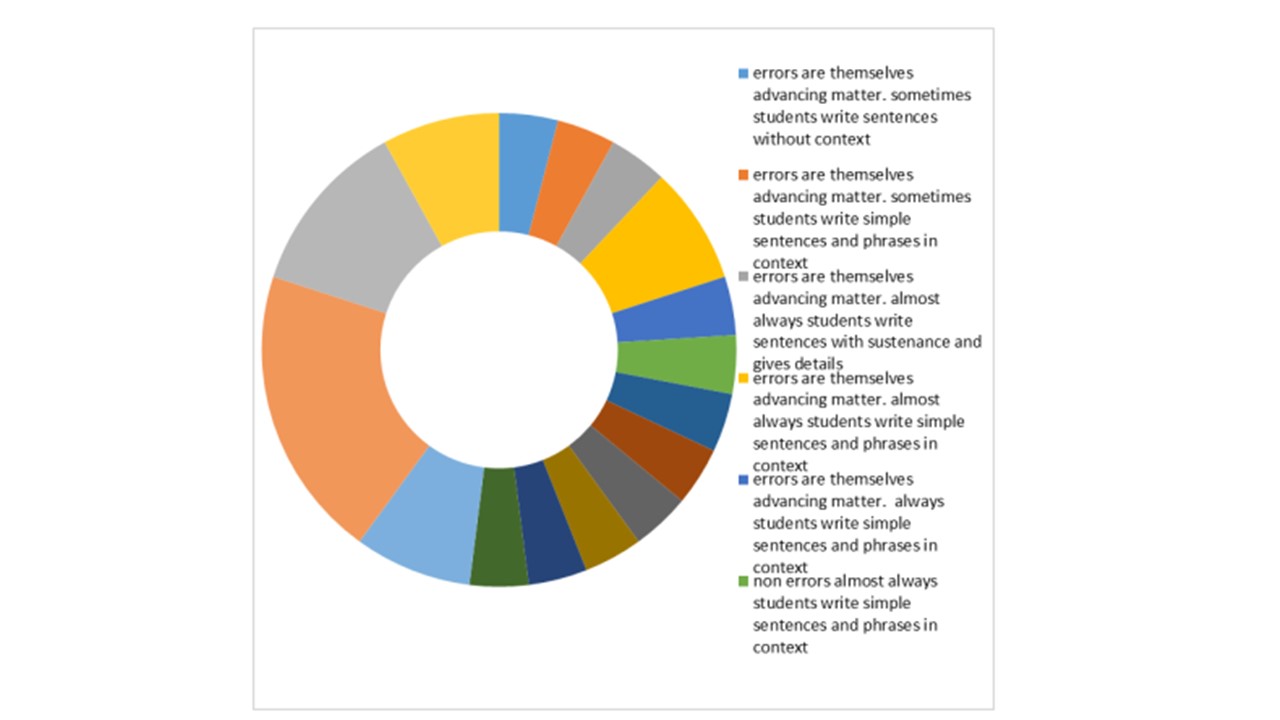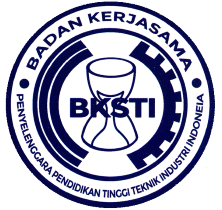Conceptions of Learning and Teaching and Their Relation to Educational Variables During Teaching Second Language
DOI:
https://doi.org/10.12928/spekta.v3i1.6081Keywords:
Emotion, Languages, Tutorials, Social implicationsAbstract
Background: People who choose to study a second language like English face an emotional charge that affects directly to the learning process. Regarding the writing production, learners create short compositions about specific topics with instructions based on grammatical structures. Once it is done, learners receive feedback on their work. However, some learners do not want to write any text because the teacher puts more attention to their mistakes rather than their successes. Without taking into account their needs, topics of interest or motivation for carrying out the exercise
Contribution: Therefore, it is set to identify the emotions that are generated by the corrections made to our learners’ written work.
Method: The research was carried on with university students aged between 18 and 25 years old who are attending classes at the center of university language classroom. This research during the April- August 2016 term.
Results: It has been found that the emotions (positive and negative) play an important role or have a great impact that causes aversion towards language learning. Therefore, it is necessary that teachers provide adequate feedback for language learning.
Conclusion: Corrections generate aversion towards the learning process. Regarding the feedback students receive from their teachers, it generates emotional charge (positive and negative) which should be followed
References
Meno, F. (2002). Un nuevo marco para la enseñanza y el aprendizaje de idiomas. Revista de educación. 329. (331), 257 -261.
Borrero, L. (2004). Cursos de idiomas en internet. En L. Borrero (Ed.) Bogotá: Grupo editorial norma.
Gardner, H. (2011). La inteligencia reformulada: Las inteligencias múltiples en el siglo XXI. España: Paidos.
Harmer, J. (2010). How to teach English. (6a Ed.). Edinburgh: Pearson Educational Limited.
Ocaña, L. y Martin, N. (2011). El desarrollo afectivo del niño de O a 6 años. En Desarrollo socioafectivo. Madrid: Ediciones Paraninfo, S.A.
Aránega, I., Alonso, J., and Juan Yuste (2014). Reconocimiento de emociones en el alumnado de educación infantil en situaciones cognitivas y en figuras faciales. En Pedro Miralles, Ma. Begoña, Raimundo Rodríguez (Eds.), Investigación e innovación en educación infantil. (pp. 107-116). Murcia: Universidad de Murcia, Servicio de Publicaciones.
García, I. (2012). Nueva metodología para la enseñanza del inglés en las escuelas bilingües. España: Bubok Publishing S.L.
Murado, J. (2012). Didáctica de Inglés en Educación Infantil. Métodos para la enseñanza y aprendizaje de la lengua inglesa. Ideaspropias España: Editorial S.L.
Ladrón De Guevara, G. (2015). La enseñanza del inglés como lengua extranjera y las competencias digitales: Reflexiones y divergencias. En Varios autores. Antología de Competencias Digitales. México: Editorial Digital UNID.
Rocha, C. (2013). Tensiones entre el campo de la comunicación y la formación por competencias. Bogotá: UNIMINUTO
Pernas. A. (2012). Diversificación curricular: lenguas, objetivos y niveles. En Laura Alba, Neus Figueras, Hernando Liaño, Pilar Mantilla, Miguel Milán, Rosa Prieto, Elena Rodríguez. Las escuelas oficiales de idiomas en el desarrollo de las políticas lingüísticas del Consejo de Europa. (pp. 20-22). España: Ministerio de Educación, Cultura y Deporte.
Larsen- Freeman, D. (2000). Techniques and principles in language teaching. (2a Ed.). Oxford: Oxford University Press.
Spratt, M., Pulverness, A., and Williams, M. (2005). The TKT Course. Cambridge: Cambridge University Press.
Watcharapunyawong, S. y Yusaha, S. (2012). Thai EFL students’ writing error in different text types. The interference of the first language. En English language teaching. 6 (1), 67-78. Nakhon Rachasima: Suranaree University of Technology.
Muñoz-Basols, J., Pérez Y., y David M. (2012). Developing Writing Skills in Spanish. New York: Routledge.
Briones, A. (2016). Es fácil aprender inglés si sabes cómo. Madrid: Mestas Ediciones.
Hogue, A. (1996). First steps in academic writing. N.Y.: Addison –Wesley Publishing Company, Inc.
López, F- (2009). Las emociones en la educación. Madrid: Ediciones Morata.
Durán, C., Catalá, A. (2012). Las alteraciones emocionales: las emociones negativas y las exigencias neuróticas. En Eneagrama: Los engaños del carácter y sus antídotos. (pp. 46 – 52). Barcelona: Editorial Kairós.
Calle, R. (2013). La claridad interior. Barcelona: Ediciones B, S. A.
Méndez, S. (2014). La Bondad de los malos sentimientos. Barcelona: Ediciones B, S. A.
Stamateas, B. (2011). Quererme más: Ideas prácticas para Sanar y Fortalecer la Autoestima. Buenos Aires: Grupo Planeta.
Badia, A., Cano, M., Fernández, C., Feliu, M., Fuentes, C., Gómez, M., Liesa, E., Llinares, S., y Pozo, J. (2012). Dificultades de aprendizaje: de los contenidos curriculares. Barcelona: Editorial UOC.
Sánchez, J. & Brito, N. (2015). Desarrollo de competencias comunicativas mediante la lectura crítica, escritura creativa y expresión oral. Revista Encuentros, Universidad Autónoma del Caribe, 13 (1), (pp. 117-141) DOI: http://dx.doi.org/10.15665/re.v13i2.502.
Hayes, J. (1996). A new framework for understanding cognition and effect in writing. En C. Levy y S. Ransdell (Eds.). The science in writing (pp.1-27). Hillsdale, NJ: Lawrence Erlbaum Associates.
Martín, E., Pozo, J., Mateos, M., Martín, A., y Pérez, M. (2014). Infant, primary and secondary teachers’ conceptions of learning and teaching and their relation to educational variables. Madrid. Springer.
Fernández, M., Tuset, A., Pérez, R., García, C. (2013). Prácticas educativas y creencias de profesores de secundarias pertenecientes a escuelas de diferentes contextos socioeconómicos. Perfiles educativos. vol. XXXV. núm. 139. IISUE-UNAM.
Arroyo, R. (2015). La escritura creativa en el aula de educación primaria. Orientacionesy propuestas educativas. Grado de Maestro en educación primaria. Universidad de Cantabria. Madrid: España.
Martínez- Fernández, J., Corcelles, M. Bañales, G., Castelló, M, & Gutierrez-Braojos, C. (2016). Exploring conceptions about writing and learning, undergraduates’’ patterns of beliefs and the quality of academic writing. Barcelona: Education & Psychology I+D+I and Ilustre Colegio Oficial de la Psicología de Andalucía Oriental.
González, B. & Vega, V. (2010). Práctica de lectura y escritura en cinco asignaturas de diferentes programas de la Universidad Sergio Arboleda. Revista Civilizar. Recuperado de: http://www.scielo.org.co/scielo.php?script=sci_arttext&pid=S1692-58582015000200008&lang=pt
Hernández, R., Fernández, C. and Baptista, M. (2010). (5ª Ed.). Metodología de la investigación. México D.F. : McGRAW-HILL.

Downloads
Published
How to Cite
Issue
Section
License
Copyright (c) 2022 Tim Chen, Robert C. Crosbie , Azita Anandkumarb , Charles Melville , N Nguyen, J Chen

This work is licensed under a Creative Commons Attribution-ShareAlike 4.0 International License.
Authors who publish with SPEKTA (Jurnal Pengabdian Kepada Masyarakat: Teknologi dan Aplikasi) agree to the following terms:
- Authors retain copyright and grant the journal the right of first publication with the work simultaneously licensed under a Creative Commons Attribution License (CC BY-SA 4.0) that allows others to share the work with an acknowledgment of the work's authorship and initial publication in this journal.
- Authors are able to enter into separate, additional contractual arrangements for the non-exclusive distribution of the journal's published version of the work (e.g., post it to an institutional repository or publish it in a book), with an acknowledgment of its initial publication in this journal.
- Authors are permitted and encouraged to post their work online (e.g., in institutional repositories or on their website) prior to and during the submission process, as it can lead to productive exchanges, as well as earlier and greater citation of published work.

This work is licensed under a Creative Commons Attribution-ShareAlike 4.0 International License.












